Where Is Middle C On Guitar?
There is a short answer and a long answer to this question. Let’s deal with the quick answer first.
There are five ways you can play middle C on guitar:
- String 2, fret 1.
- String 3, fret 5.
- String 4, fret 10.
- String 5, fret 15.
- String 6, fret 20.
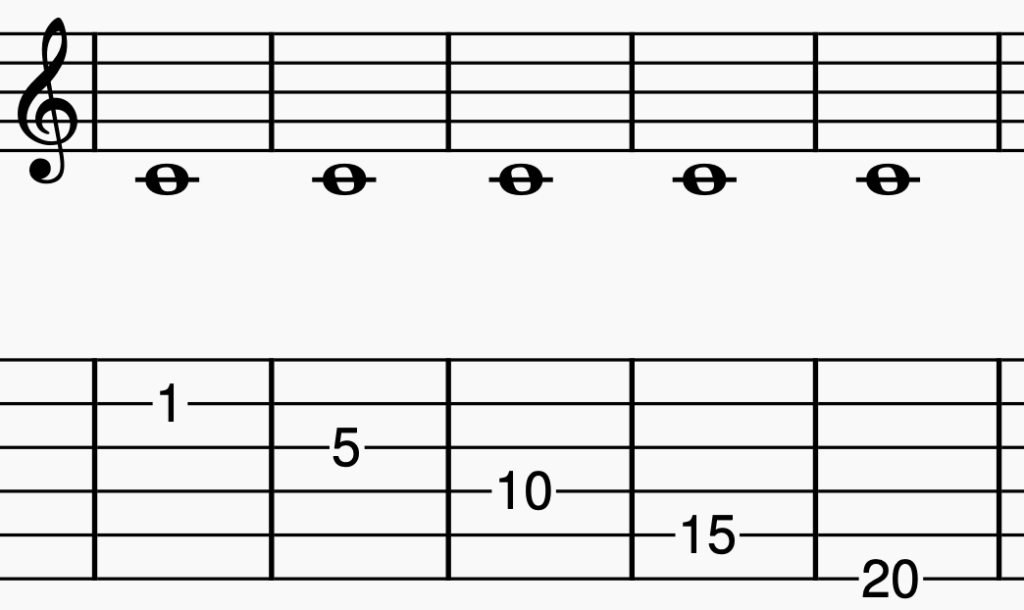
This is the 5 ways you can play middle C on guitar.
Now let’s get into what middle C is, some of the confusions around it, how we notate it and how different music software such as Guitar Pro, MuseScore and Logic Pro handle middle C.
What is Middle C?
Middle C is a note with frequency of 261.625565 Hz (under A=440Hz concert tuning, which is what most Western Music works to).
It is referred to as C4 using Scientific Pitch Notation (more on this below).
Here is middle C written on treble and bass clefs:
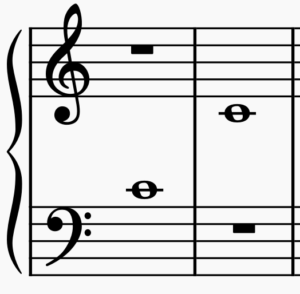
The two notes here are both middle C.
There can be some confusion and contradictory advice on playing middle C on guitar. This isn’t helped by the fact that different software manufacturers label middle C differently.
So let’s briefly talk about how the guitar works, what middle C actually is and how different software for guitar players handle middle C.
Pitch Number Systems and Middle C
In music, we deal with the notes A through to G, and their accidentals. Here is an examples of the notes A through to G written out on the treble clef:
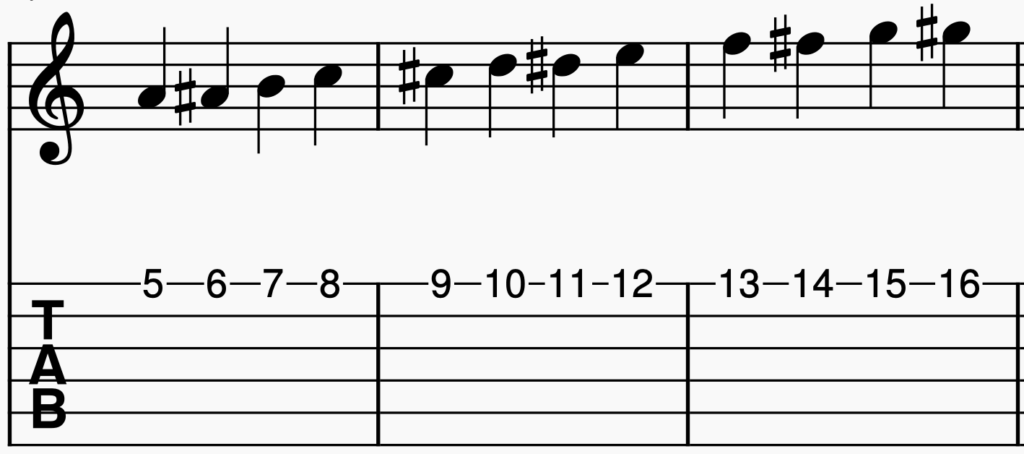
The above image shows a single octave. However, if you’ve been learning [where the notes are on guitar strings]( {{ < ref “/blog/2021-03-10-how-to-memorise-the-notes-on-guitar“ >}} ), you’ll know that you can play, for example, the C note in multiple places on the guitar (or on any instrument).
The following tab shows where all the C notes are on a guitar:
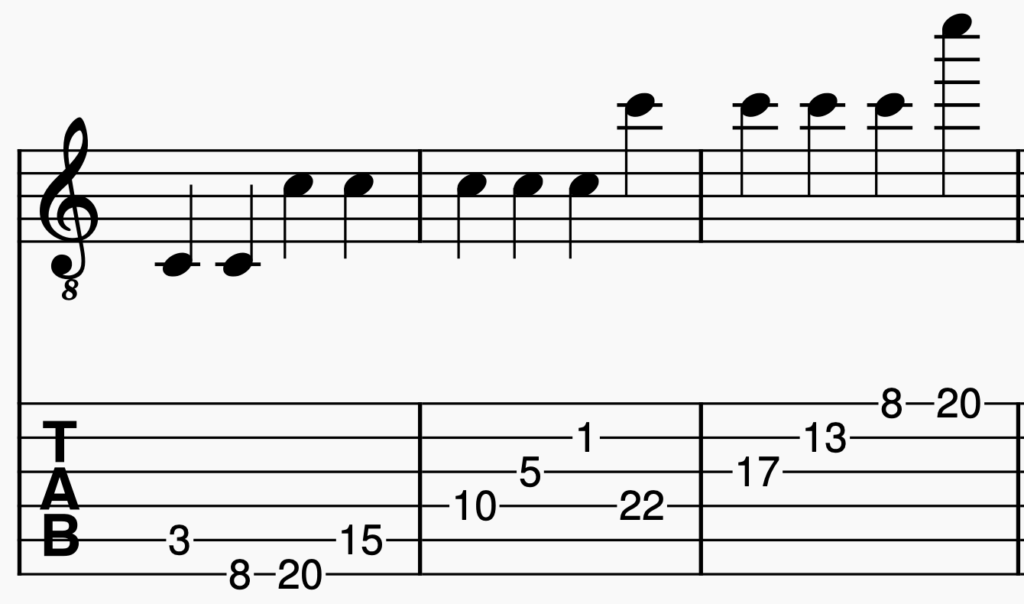
As you can see from the above diagram, there are 12 different ways you play the note C. You can also see that (on guitar) C can exist in 4 different octaves.
So the next question is, when talking about notes, how do we distinguish between C notes in two different octaves?
One possible method would be to refer to these different octaves by their frequency, however, this would be quite difficult. It would involve memorising an awful lot of frequencies and would not translate well to other tuning systems.
Fortunately, there are two main systems for doing this, Helmholtz Notation, and Scientific Pitch Notation.
Scientific Pitch Notation is more popular (and useful) than Helmholtz Notation, but I’ve included both so that you can understand both systems.
Let’s take a quick look at them:
What is Scientific Pitch Notation?
Scientific Pitch Notation, sometimes abbreviated to ‘SPN’, is sometimes also known as American Scientific Pitch Notation, or International Pitch Notation.
It’s yet another musical term that can be referred to by several different names.
Scientific Pitch Notation gives us a way to refer to specific pitches with an octave.
For example, the lowest note that a human being can audibly perceive is C0. When we look at the next C an octave higher, that is denoted as C1. Every time we move from B to C, we go up an octave, for example:
C0 D0 E0 F0 G0 A0 B0 C1 D1 E1 F1 G1 A1 B1 C2 etc
The system runs from C0 up to Eb10, which tends to be the highest note most people can hear.
Here is a quick example of how different octaves of C correspond to the treble and bass clef with Scientific Pitch Notation:

Which brings us to: Middle C is written as C4 in scientific pitch notation.
On the treble clef, this is the first ledger line below the stave. On the bass clef, middle C is the first ledger line above the stave.
Middle C in Helmholtz Notation
Helmholtz Notation takes a different approach to the problem of differentiation the same note between different octaves. Rather than numbers, Helmholtz notation uses , and ‘.
The lowest possible C in Helmholtz notation is written as C, and middle C is written as c’.
Here is a diagram showing the different C’s as written in Helmholtz notation:

Wikipedia has a brief history of how Helmholtz Notation came into being:
Helmholtz proposed this system in order to accurately define pitches in his classical work on acoustics Die Lehre von den Tonempfindungen als physiologische Grundlage für die Theorie der Musik (1863) translated into English by A.J. Ellis as On the Sensations of Tone (1875). Helmholtz based his notation on the practice of German organ builders for labelling their pipes, itself derived from the old German organ tablature in use from late medieval times until the early 18th century. His system is widely used by musicians across Europe and is the one used in the New Grove Dictionary. Once also widely used by scientists and doctors when discussing the scientific and medical aspects of sound in relation to the auditory system, it has now largely been replaced in scientific and medical contexts by scientific pitch notation.
As the above history states, Helmholtz notation has largely been replaced by Scientific Pitch Notation (described above). However, I included it here for completeness, incase you come across it.
Software and Instrument Manufacturers “Disagree” on Middle C
We just stated that under scientific pitch notation, middle C is designated as C4.
If only things were that simple.
Different software and instrument manufacturers will designate middle C in different ways. Sometimes as C3 and sometimes as C5.
Yamaha keyboards, Logic Pro and Cubase will designate middle C as C3. Guitar Pro will designate middle C as C5.
But, before we look at some of the complications around software and instrument manufacturers designation of middle C, we need to talk about an aspect of the guitar which you may not be aware of:
The Guitar is a Transposing Instrument
So the first question that has probably come to mind is, “What is a transposing instrument?”.
A transposing instrument is one where the note that is written is different to the note that sounds.
At first glance, this might seem like a daft system, however, it is actually very clever. It allows different instruments to use the stave more effectively, and has some ingenious uses when working with instruments of different tunings.
As a guitar player used to using tablature, these benefits may not be so apparent, but if you start to learn about other instruments and orchestration, you will quickly see how clever the system is.
Let’s bring this back to the guitar.
The guitar is a transposing instrument, in that every note sounds an octave lower than written.
So when you see a note written here on guitar:
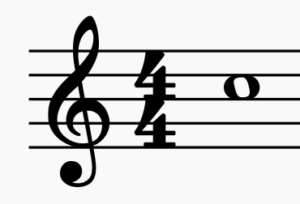
What we actually have here is the following:
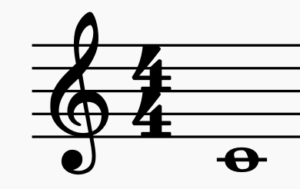
So when you play a note written as middle C on guitar, what you actually hear is C3 (not C4, which is middle C).
As an additional confusion, different computer programs handle this in slightly different ways.
So let’s take a quick look at how the three main programs for working with guitar tablature handle guitar notation and tablature, so that can be confident you know what you are looking at:
Logic Pro
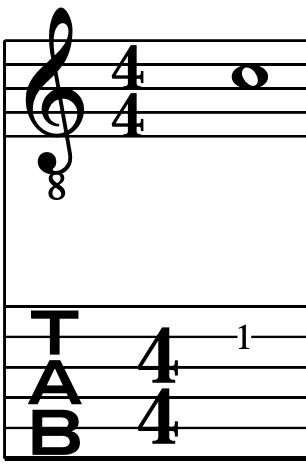
Middle C listed as: C3
MuseScore
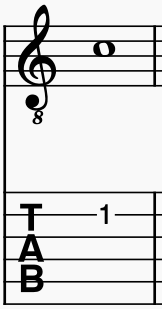
Middle C listed as: C4
Guitar Pro
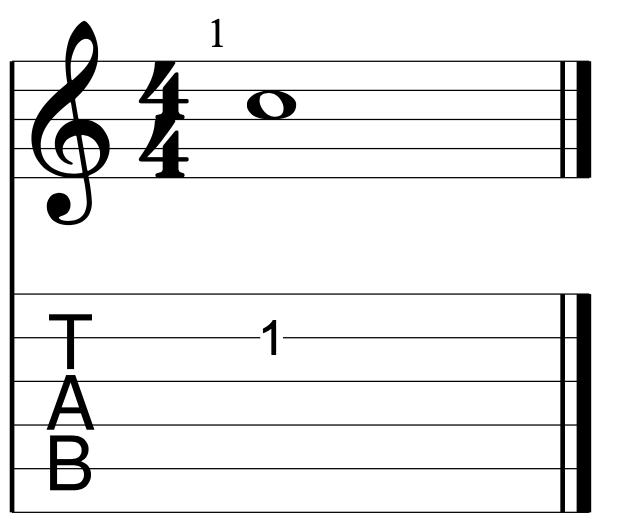
Middle C listed as: C5
Here are some screenshots showing how these programs are referring to middle C:
Logic Pro shows middle C as C3:
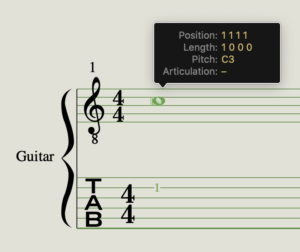
When you hold a mouse click on a note in Logic Pro, you can see its Scientific Pitch.
MuseScore shows middle C as C4:

Screenshot from MuseScore showing middle C recognised as C4. This appears in the lower left hand corner of MuseScore.
Guitar Pro lists middle C as C5:
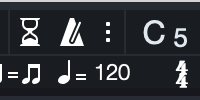
Guitar Pro will display Scientific Pitch Notation to the right of the transport controls, with metronome, count in and tempo controls.
There are a couple of things that we can see from this:
- MuseScore and Logic Pro both use a transposing clef for guitar. Guitar Pro does not.
- All three programs list middle C as a different octave in Scientific Pitch Notation.
MuseScore correctly designates middle C as C4, but Logic Pro and Guitar Pro do not. Why is this?
Why does Logic Pro use C3 as Middle C?
The forums over at LogicProHelp.com had some great information on this. The original MIDI specification had Middle C as C3 and Yamaha’s MIDI keyboards also worked this way.
Logic Pro, having incredibly strong MIDI functionality, took on this standard.
However, Logic Pro does have a setting in the preferences you can edit to change back to having middle C recognised as C4.
I’ve read that Cubase also behaves this way, writing middle C as C3 by default.
How to Get Logic Pro 10.5 to Treat Middle C as C4
This is a nice and easy fix, should you want to do so.
Open up preferences. Click on the “Display” menu:
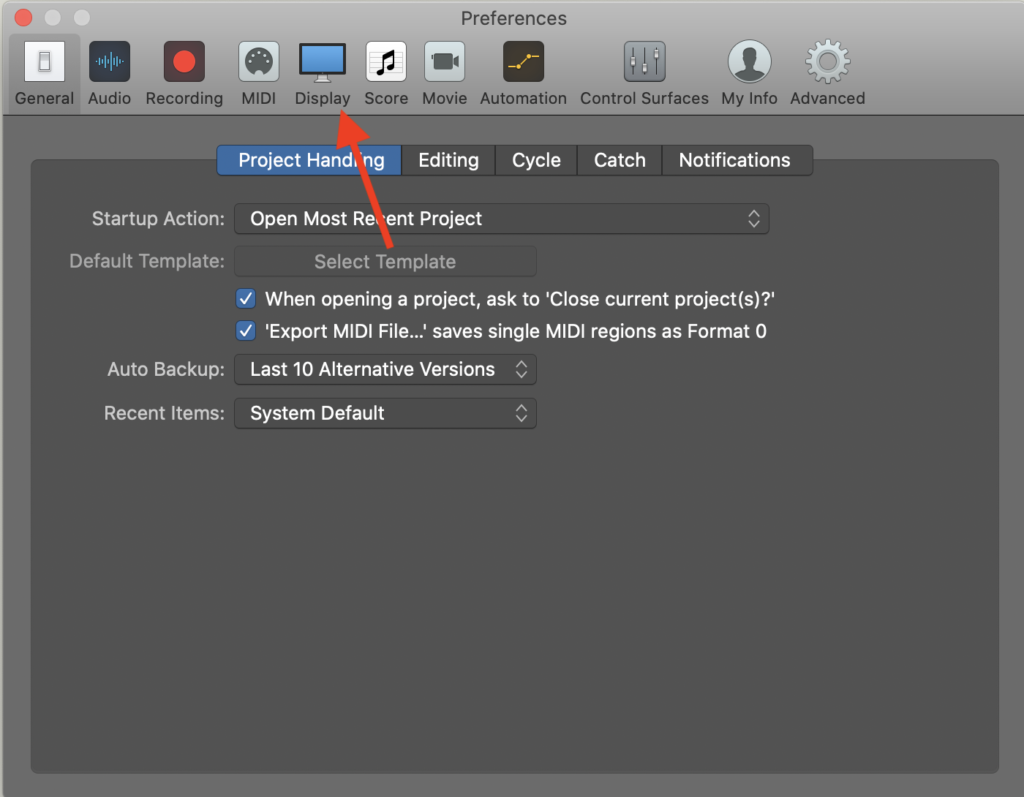
Next, look at the “Displays” options towards the bottom, and click on the drop down menu for “Display Middle C as”:
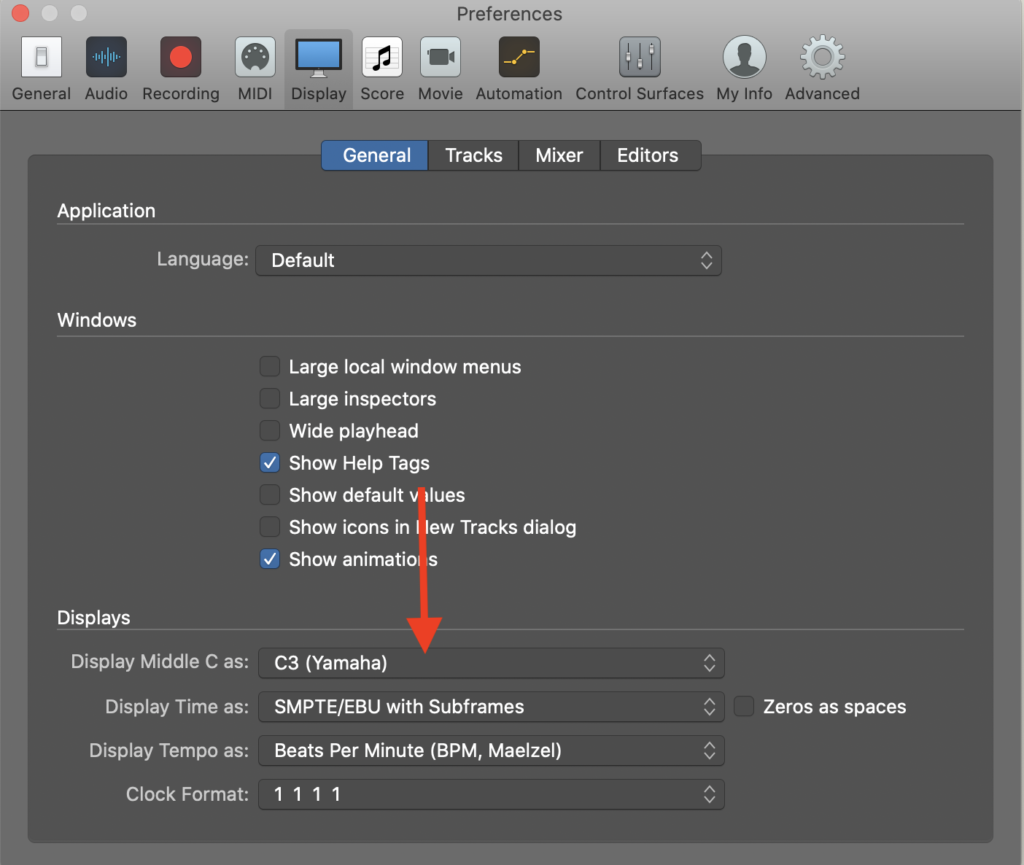
On the menu that comes up, choose “C4 (Roland)”:
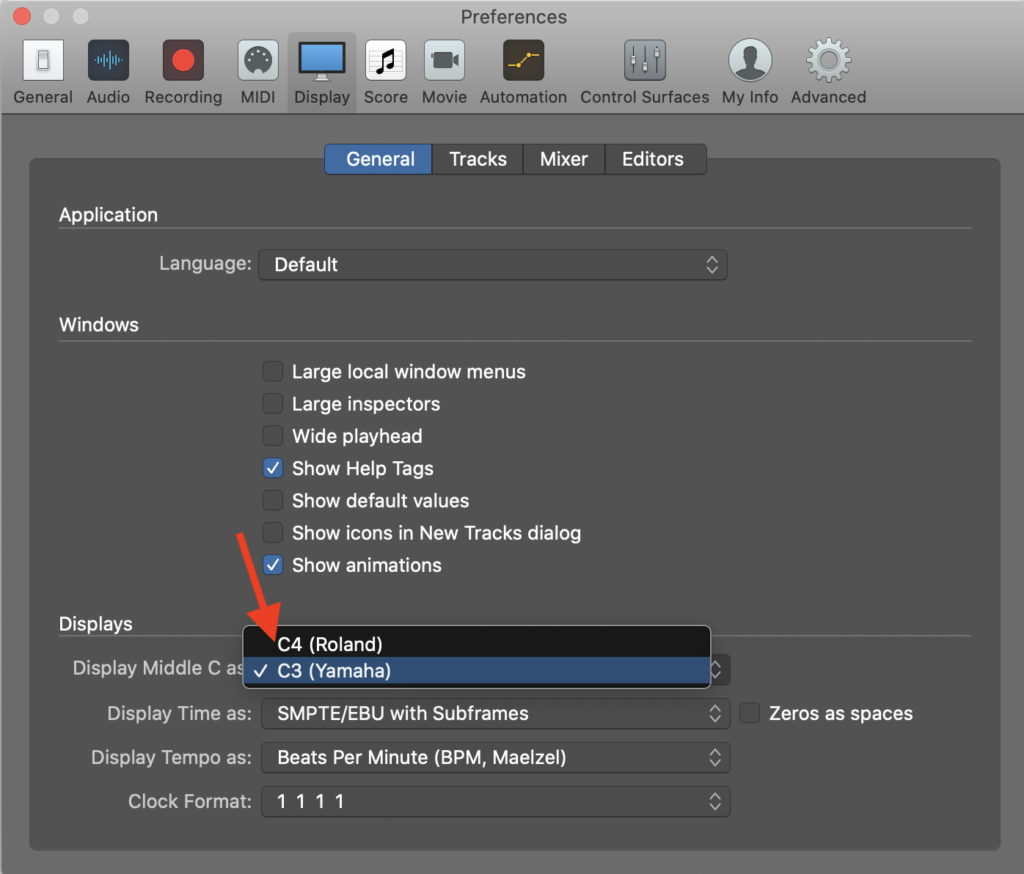
And you are all done! Logic Pro will now display middle C as C4:
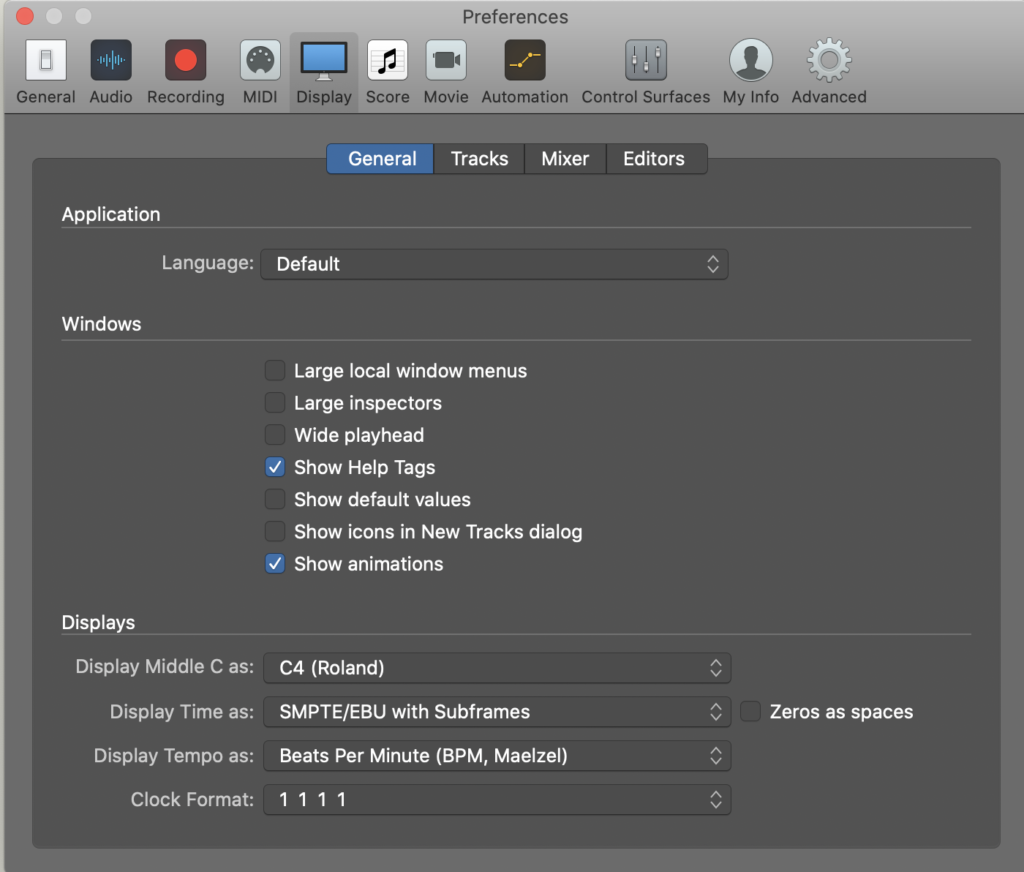
If you need to it back to C3, you can do so anytime from the same menu.
Why does Guitar Pro use C5 for Middle C?
My guess is that it is based on how Guitar Pro is handling the transposition of the guitar. As previously mentioned, the guitar is a transposing instrument, which means notes sound an octave lower than written
This is why when, in MuseScore and Logic Pro, when you add a guitar track, the treble clef has the tiny ‘8’ underneath it. However, adding this transposing clef isn’t “mandatory” for writing guitar music.
If the clef doesn’t appear with the ‘8’ underneath it, then the transposition is assumed.
However, this should be reflected in the Scientific Pitch Notation and Guitar Pro does not do this.
As far as I can tell, there aren’t any settings to change this behaviour - but I could be wrong.
Personally, I feel that this is a very confusing way to handle things. But at least now you know!
This forum post from the AVID forums has some good information on how Guitar Pro works: https://duc.avid.com/showthread.php?t=338949
Does it matter if different programs use different designations for Middle C?
Yes and no.
It’s bit confusing, and completely unnecessary. However, once you understand how the programs are behaving, you can understand what is happening.
If you were to export MIDI data from one program and import it to another, you will find your music does not change.
Some people worry that if you export from, for example, MuseScore using middle C as C4, and import that MIDI file to Guitar Pro which writes middle C as C5, the sound will change.
The sound will not change - the frequencies of the notes remains unchanged.
The location on the staves of your notes will not change.
All that changes is how the program labels the note.
So at the end of the day, it’s not too much of a problem. However, I do like the feature on Logic Pro to change middle C to C4 - that is one less thing for me to think about when composing!
Conclusion
When I originally started writing this article, I thought it was going to be quite simple. A paragraph or two about middle C.
But once I started researching it, I quickly found it was not quite as simple as I originally thought!
Hopefully after reading this, you now understand:
- How to play middle C on guitar.
- The different systems used for designating middle C and how they work.
- How different music technology programs, such as Logic Pro, MuseScore and Guitar Pro differ in their use of Scientific Pitch Notation for designating middle C.
I can imagine my younger self getting awfully confused trying to figure this out, hopefully this article has stripped away potential confusion and left you understanding how middle C on guitar works.
If you have a question or a comment, leave a note below.